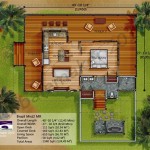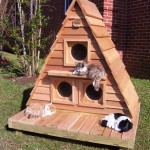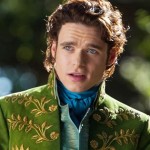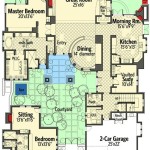Plans for a bluebird house outline the detailed instructions and materials required to construct a suitable nesting environment for bluebirds, a species of small, vibrantly colored birds known for their melodic songs. These houses typically consist of a wooden box with a small entrance hole, carefully designed to meet the specific nesting needs of bluebirds.
Bluebird houses have become increasingly popular among bird enthusiasts and landowners who wish to encourage the presence of these beneficial birds on their properties. By providing a safe and suitable nesting space, these houses help support the breeding success and conservation of bluebird populations, which play a vital role in insect control and enhance the overall biodiversity of the local ecosystem.
In the following sections, we will explore the essential elements of bluebird house plans, including the materials required, the optimal dimensions and design considerations, and the proper placement and maintenance techniques to ensure the safety and effectiveness of these nesting structures.
When considering plans for a bluebird house, several key aspects should be taken into account to ensure the well-being and nesting success of bluebird occupants. Here are eight important points to keep in mind:
- Proper Dimensions
- Appropriate Entrance Hole
- Durable and Weather-Resistant Materials
- Adequate Ventilation
- Predator Baffles
- Drainage Holes
- Suitable Mounting Options
- Regular Cleaning and Maintenance
By adhering to these guidelines and incorporating these important elements into your bluebird house plans, you can provide a safe and inviting nesting environment for these beautiful and beneficial birds.
Proper Dimensions
The dimensions of a bluebird house are crucial for providing a comfortable and suitable nesting environment for the birds. The internal space should be large enough to accommodate the adult birds and their young, while not being so spacious that it becomes difficult for the birds to maintain a proper temperature within the nest. The following dimensions are generally recommended:
- Floor Space: 5 inches x 5 inches (12.7 cm x 12.7 cm)
- Height: 6 inches (15.2 cm) from the floor to the top of the back wall
- Entrance Hole Placement: 1.5 inches (3.8 cm) below the top of the front wall
- Entrance Hole Diameter: 1.5 inches (3.8 cm)
These dimensions provide sufficient space for bluebirds to move around comfortably, build their nest, and raise their young. It is important to adhere to these dimensions as closely as possible to ensure the well-being and nesting success of the birds.
Appropriate Entrance Hole
The entrance hole of a bluebird house is a critical element that affects the nesting success of the birds. It must be the right size and shape to allow bluebirds to enter and exit easily, while preventing larger birds and predators from accessing the nest. The following points should be considered when designing the entrance hole:
- Diameter: The entrance hole should be 1.5 inches (3.8 cm) in diameter. This size is large enough for bluebirds to enter and exit comfortably but small enough to deter larger birds and predators.
- Shape: The entrance hole should be round or oval in shape. Avoid square or rectangular holes, as these can make it easier for predators to enter the nest.
- Placement: The entrance hole should be placed 1.5 inches (3.8 cm) below the top of the front wall. This placement helps to prevent predators from reaching into the nest and also provides some protection from the elements.
- Perch: A small perch or landing area can be placed just below the entrance hole to provide the birds with a place to land before entering the nest.
By following these guidelines, you can create an appropriate entrance hole that will allow bluebirds to safely and easily access their nest while deterring predators.
Durable and Weather-Resistant Materials
The materials used to construct a bluebird house play a crucial role in its durability and ability to withstand the elements. Bluebird houses are typically placed outdoors and exposed to various weather conditions, including rain, snow, sun, and wind. Therefore, it is essential to choose materials that are durable and weather-resistant to ensure the longevity and effectiveness of the house.
- Cedar or Redwood: Cedar and redwood are naturally rot-resistant and durable woods that are ideal for building bluebird houses. These woods are able to withstand moisture, insects, and decay, making them a long-lasting option.
- Pine or Fir: Pine and fir are more affordable options than cedar or redwood, but they are not as naturally resistant to rot and decay. However, if treated with a water-repellent sealant, pine or fir can provide adequate protection from the elements.
- Plastic: Plastic bluebird houses are lightweight, durable, and easy to clean. They are not susceptible to rot or decay, making them a low-maintenance option. However, plastic houses can become brittle in cold temperatures and may not provide as much insulation as wooden houses.
- Recycled Materials: Bluebird houses can also be constructed using recycled materials, such as wood scraps or plastic bottles. This is a sustainable and cost-effective way to provide nesting sites for bluebirds.
When choosing materials for your bluebird house, consider the climate and weather conditions in your area. Opt for materials that are durable, weather-resistant, and appropriate for your specific location.
Adequate Ventilation
Proper ventilation is essential for the health and well-being of bluebirds nesting in your birdhouse. Good ventilation allows for air circulation, which helps to regulate temperature and humidity levels within the nest. This is particularly important during hot summer months when temperatures can soar and excessive heat can be fatal to nestlings.
- Air Holes: Install small air holes near the top of the back or sides of the house to allow for cross-ventilation. These holes should be approximately 1/2 inch (1.27 cm) in diameter and should be covered with wire mesh to prevent birds or predators from entering the house through them.
- Drainage Holes: Drainage holes in the floor of the house allow excess moisture to escape, preventing the nest from becoming damp and moldy. These holes should be approximately 1/4 inch (0.63 cm) in diameter and should be placed in the corners of the floor to facilitate drainage.
- Avoid Overcrowding: Do not place nesting material in the house, as this can block ventilation and create a damp environment. Bluebirds will naturally gather their own nesting material.
- Regular Cleaning: Regularly clean the bluebird house to remove old nesting material and droppings, which can accumulate and impede ventilation.
By ensuring adequate ventilation in your bluebird house, you can provide a healthy and comfortable nesting environment for the birds and increase their chances of successful nesting and fledging.
Predator Baffles
Predator baffles are an essential component of bluebird house plans as they play a crucial role in protecting the nesting birds and their young from predators such as snakes, cats, and squirrels. These baffles are typically made of slick or spiky materials that deter predators from climbing up the pole or post supporting the bluebird house.
One effective type of predator baffle is a metal cone or dome that fits over the top of the pole or post. These baffles are designed to prevent predators from getting a foothold on the pole and climbing up to the nest box. They are usually made of galvanized steel or aluminum and are available in various sizes to fit different pole diameters.
Another type of predator baffle is a baffle with a slanted or slippery surface. These baffles are attached around the pole or post and extend outward, making it difficult for predators to climb up. They are often made of slick materials such as plastic or metal and can be either round or square in shape.
Some predator baffles also incorporate spikes or sharp points that deter predators from attempting to climb up the pole. These baffles are usually made of metal or plastic and have sharp spikes or points protruding outward. It is important to ensure that any spikes or points are not sharp enough to injure birds or other wildlife.
When choosing a predator baffle, consider the size of the pole or post supporting the bluebird house and the types of predators common in your area. Proper installation of the baffle is also crucial to ensure its effectiveness in deterring predators and protecting the nesting birds.
Drainage Holes
Drainage holes are an essential feature of bluebird house plans as they allow excess moisture to escape from the nest box, preventing it from becoming damp and moldy. Dampness can be detrimental to the health of nestlings, potentially leading to respiratory problems and other health issues. Mold growth can also compromise the integrity of the nesting material and create an unhealthy environment for the birds.
To ensure proper drainage, it is recommended to drill or create several small holes in the floor of the bluebird house. These holes should be approximately 1/4 inch (0.63 cm) in diameter and should be placed in the corners of the floor. The holes should be positioned in a way that allows water to drain out easily without compromising the structural integrity of the floor.
The number of drainage holes required may vary depending on the size of the bluebird house and the climate in your area. In regions with heavy rainfall or high humidity, it may be necessary to drill additional drainage holes to ensure adequate drainage. It is important to avoid drilling too many holes, as this can weaken the floor of the house.
Regular cleaning and maintenance of the bluebird house are essential to ensure that the drainage holes remain clear and functional. Over time, nesting material and droppings can accumulate on the floor of the house, potentially blocking the drainage holes. It is recommended to clean the house thoroughly at the end of each nesting season and remove any accumulated debris or nesting material.
By incorporating drainage holes into your bluebird house plans and ensuring proper maintenance, you can provide a dry and healthy nesting environment for the birds, increasing their chances of successful nesting and fledging.
Suitable Mounting Options
Selecting the right mounting option for your bluebird house is crucial to ensure its stability, longevity, and effectiveness in attracting bluebirds. Different mounting options are available, each with its own advantages and considerations. Here are four common mounting options to consider when planning your bluebird house:
- Post or Pole Mounting:
Mounting the bluebird house on a post or pole provides a stable and secure platform. The post should be firmly planted in the ground and tall enough to place the house at an appropriate height above the ground. This option allows for easy access to the house for cleaning and maintenance.
- Tree Trunk Mounting:
Attaching the bluebird house to the trunk of a tree provides a natural and discreet nesting site for the birds. Choose a tree with a sturdy trunk and a location that offers protection from the elements and predators. Ensure that the house is mounted securely to prevent it from falling or swaying in strong winds.
- Fence Post Mounting:
Utilizing a fence post as a mounting point for the bluebird house is a convenient and space-saving option. Attach the house securely to the post, ensuring that it is stable and protected from potential disturbances.
- Ground Mounting:
In certain circumstances, mounting the bluebird house directly on the ground may be an appropriate option. This method is typically used in open areas where trees or posts are not readily available. Choose a well-drained location that provides good visibility and protection from predators.
When choosing a mounting option, consider the specific conditions of your property, the potential for predators or disturbances, and the accessibility of the house for maintenance. By selecting a suitable mounting option and installing the bluebird house securely, you can provide a stable and safe nesting environment for the birds.
Regular Cleaning and Maintenance
Regular cleaning and maintenance of your bluebird house are essential to ensure its longevity and effectiveness in attracting and supporting bluebirds. Over time, nesting material, droppings, and debris can accumulate inside the house, creating an unsanitary environment for the birds and potentially harboring parasites or diseases. Proper maintenance involves periodic cleaning and inspection of the house to remove old nesting material and ensure that the house remains in good condition.
The best time to clean a bluebird house is at the end of the nesting season, typically in late summer or early fall. Remove the old nesting material and any debris from the floor of the house. Use a soft brush or cloth to gently remove any remaining nesting material or droppings from the walls and corners of the house. Avoid using harsh chemicals or detergents, as these can leave a residue that may deter bluebirds from using the house.
Inspect the bluebird house thoroughly for any signs of damage or deterioration. Check for cracks, holes, or loose joints that may need repair. Pay particular attention to the entrance hole to ensure that it is not obstructed or damaged. If any repairs are necessary, make them promptly to maintain the structural integrity of the house.
Once the house is clean and repaired, you can reinstall it in its original location. If possible, choose a site that provides protection from the elements and predators. Regularly monitor the house throughout the year, especially during the nesting season, to ensure that it remains in good condition and is being used by bluebirds.
By following these simple maintenance steps, you can help to provide a safe and suitable nesting environment for bluebirds, increasing their chances of successful nesting and fledging. Regular cleaning and maintenance will also extend the lifespan of the bluebird house, allowing you to enjoy the presence of these beautiful birds in your backyard for many years to come.










Related Posts








